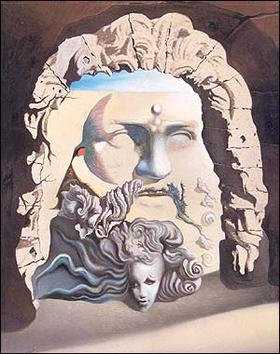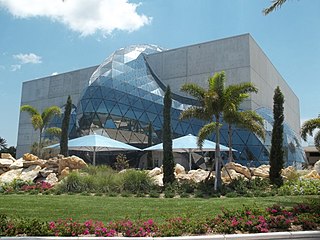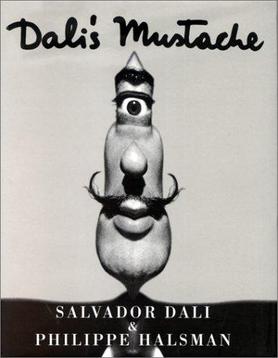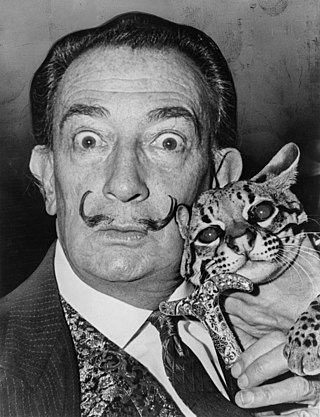Stan Lauryssens | |
|---|---|
 | |
| Born | October 14, 1946 Antwerp |
| Occupation | Writer, former journalist |
| Nationality | Belgian |
| Genres | Fiction, non-fiction |
Stan Lauryssens (born 14 October 1946 in Antwerp) is a Belgian writer. He lives in Antwerp and London.
Stan Lauryssens | |
|---|---|
 | |
| Born | October 14, 1946 Antwerp |
| Occupation | Writer, former journalist |
| Nationality | Belgian |
| Genres | Fiction, non-fiction |
Stan Lauryssens (born 14 October 1946 in Antwerp) is a Belgian writer. He lives in Antwerp and London.
Lauryssens worked as a journalist in the 1970s and 1980s and claims to have interviewed with people such as Andy Warhol and some of Hitler’s henchmen such as Otto Günsche.[ citation needed ]
Lauryssens has written five books about the Nazis, which includes the 1999 biography on German cultural historian and writer Arthur Moeller van den Bruck, The Man Who Invented the Third Reich. Several of Lauryssens's non-fiction books have been serialised in The Mail on Sunday.[ citation needed ]
Lauryssens has faced criticism over his depiction of persons such as Salvador Dalí and Julien Schoenaerts. [1] His 2007 book Dalí and I has been met with criticism from the Salvador Dali Foundation over claims about the artist's sex life and that Dalí knowingly participated in the production of fake artworks, which Lauryssens sold for him. [2] The Foundation stated that these claims were made to promote the book and a prospective film that would have starred Cillian Murphy and Al Pacino as Lauryssens and Dalí, respectively. [3] [2] Filming on the adaptation was halted due to a dispute between the Foundation and the movie's director, as the Foundation held the rights to Dali's name. [4] A lawsuit was levied by Matthias Schoenaerts and his mother Dominique Wiche against Lauryssens and the publisher of his biography on Schoenaerts's father Julien Schoenaerts, Manteau, over claims of misrepresentation. [1] [5] In regards to the lawsuit Lauryssens acknowledged that he used artistic license when writing the biography and that it contained untruths and misinformation. The judge ruled that the book must contain a sticker that acknowledged the misinformation, as Lauryssens stated in the book that it was truthful, and that they may not use Matthias Schoenaerts's name or false claims that Julien Schoenaerts was an exhibitionist in interviews or publicity for the book. [5]
In 2019 concerns were raised by Doorbraak that Lauryssens had plagiarized content for his 2019 book Mijn Herinneringen aan Jef Geeraerts, a biography on Belgian writer Jef Geeraerts. [6] Doorbraak reported that Pandora Publishing had made Lauryssens re-write portions of the book twice due to "copying memories of Jeroen Brouwers, Julien Weverbergh and Jef Geeraerts himself". [7] Lauryssens acknowledged the claims and wrote that it was "a professional mistake for which I deserve a red card." [7]
Lauryssens was imprisoned in the late 1980s for selling thousands of fake Dali works, which he claims Dali knew about and approved, after being sought by Interpol for a number of years. [2]

Salvador Domingo Felipe Jacinto Dalí i Domènech, Marquess of Dalí of Púbol, known as Salvador Dalí, was a Spanish surrealist artist renowned for his technical skill, precise draftsmanship, and the striking and bizarre images in his work.

Gala Dalí, usually known simply as Gala, was the wife of poet Paul Éluard and later of artist Salvador Dalí, who were both prominent in surrealism. She also inspired many other writers and artists.

Destino is an animated surrealist short film released in 2003 by Walt Disney Animation Studios1. Destino is unique in that its production originally began in 1945, 58 years before its eventual completion in 2003. The project was originally a collaboration between Walt Disney and Spanish painter Salvador Dalí, with music written by Mexican songwriter Armando Domínguez and performed by Mexican singer Dora Luz as the sound track. It was included in the Animation Show of Shows in 2003.
Fact-checking is the process of verifying the factual accuracy of questioned reporting and statements. Fact-checking can be conducted before or after the text or content is published or otherwise disseminated. Internal fact-checking is such checking done in-house by the publisher to prevent inaccurate content from being published; when the text is analyzed by a third party, the process is called external fact-checking.

Stijn Streuvels, born Franciscus (Frank) Petrus Maria Lateur, was a Flemish Belgian writer.

The Salvador Dalí Museum is an art museum in St. Petersburg, Florida, United States, dedicated to the works of Salvador Dalí. Designed by Yann Weymouth, the museum is located on the downtown St. Petersburg waterfront by 5th Avenue Southeast, Bay Shore Drive, and Dan Wheldon Way.

Josephus Antoon Louisa "Jef" Mermans, nicknamed "The Bomber", was a football striker from Belgium, who played much of his career at Anderlecht, with whom he won seven Belgian Championship titles and finished top scorer of this competition three times. He played 405 games and scored 369 goals for Anderlecht, making him the club's all time topscorer.

Christ of Saint John of the Cross is a painting by Salvador Dalí made in 1951 which is in the collection of the Kelvingrove Art Gallery and Museum, Glasgow. It depicts Jesus Christ on the cross in a darkened sky floating over a body of water complete with a boat and fishermen. Although it is a depiction of the crucifixion, it is devoid of nails, blood, and a crown of thorns, because, according to Dalí, he was convinced by a dream that these features would mar his depiction of Christ. Also in a dream, the importance of depicting Christ in the extreme angle evident in the painting was revealed to him.

Matthias Schoenaerts is a Belgian actor. He made his film debut at the age of 13 in Daens (1992), which was nominated for the Academy Award for Best Foreign Language Film. He is best known for his roles as Filip in Loft (2008), Jacky Vanmarsenille in the Oscar-nominated Bullhead (2011), Ali in the BAFTA and Golden Globe-nominee Rust and Bone (2012), for which he won the César Award for Most Promising Actor, Eric Deeds in The Drop (2014), Bruno von Falk in Suite Française (2015), Gabriel Oak in Far from the Madding Crowd (2015), Hans Axgil in The Danish Girl (2015) and Uncle Vanya in Red Sparrow (2018). Schoenaerts received critical acclaim for his portrayal of an ex-soldier suffering from PTSD in Disorder (2015), and for his performance as an inmate training a wild horse in The Mustang (2019).
Giraffes on Horseback Salad, also called The Surrealist Woman, was a screenplay written in 1937 by Salvador Dalí for the Marx Brothers. It was to be a love story between a Spanish aristocrat named "Jimmy" and a "beautiful surrealist woman, whose face is never seen by the audience". Dalí considered that the central theme of the film would be "the continuous struggle between the imaginative life as depicted in the old myths and the practical and rational life of contemporary society" and hoped that the film score could be written by Cole Porter.

Soft Construction with Boiled Beans (Premonition of Civil War) (1936) is a painting by the Spanish surrealist artist Salvador Dalí. Dalí created the piece to represent the horrors of the Spanish Civil War, having painted it only six months before the conflict began. He subsequently claimed that he was aware the war was going to occur long before it began, and cited his work as evidence of "the prophetic power of his subconscious mind." However, some have speculated that Dalí may have changed the name of the painting after the war to emphasize his prophetic assertions, although it is not entirely certain.
Julien Levy (1906–1981) was an art dealer and owner of Julien Levy Gallery in New York City, important as a venue for Surrealists, avant-garde artists, and American photographers in the 1930s and 1940s.

Knokke Casino is a sea-front casino in the town of Knokke, in the administrative community Knokke-Heist, in the province of West Flanders in Flanders, Belgium.
Robert P. Descharnes was a French photographer, filmmaker and author. He served as Salvador Dalí's secretary and, after the painter's death, administrator of his copyright. He is the author of several books on Dalí.

Dali's Mustache is an absurdist humorous book by the surrealist artist Salvador Dalí (1904–1989) and his friend, the photographer Philippe Halsman (1906–1979). The first edition was published in October 1954 in New York; slightly modified French editions followed in the 1980s and 1990s.
Angèle Georgette Ghislaine Manteau, born in Dinant on 24 January 1911 and died in Aalst on 20 April 2008, was a Belgian publisher. According to the Royal Flemish Academy of Belgium for Science and the Arts, which presented her with an award in 2003, she was "the main Flemish literary editor of the twentieth century" and her publishing house has "undoubtedly left its mark on the history of Flemish literature".
Fake news in India refers to fostering and spread of false information in the country which is spread through word of mouth, traditional media and more recently through digital forms of communication such as edited videos, websites, blogs, memes, unverified advertisements and social media propagated rumours. Fake news spread through social media in the country has become a serious problem, with the potential of it resulting in mob violence, as was the case where at least 20 people were killed in 2018 as a result of misinformation circulated on social media.

A Chemist Lifting with Extreme Precaution the Cuticle of a Grand Piano is a 1936 oil painting by artist Salvador Dalí. The painting is an example of Dalí's distinctive, avant-garde brand of surrealism as well as a curious example of Dalí's mysterious relationship with Judaism.
Misinformation related to the COVID-19 pandemic in the Philippines consists of disinformation about the COVID-19 pandemic propagated by various sources.

Babou was a pet ocelot and frequent companion of the surrealist artist Salvador Dalí in the 1960s. A cat lover, Dalí claimed to have been given the animal by the head of state of Colombia. Babou's date of death is unknown.
{{cite web}}: CS1 maint: numeric names: authors list (link)